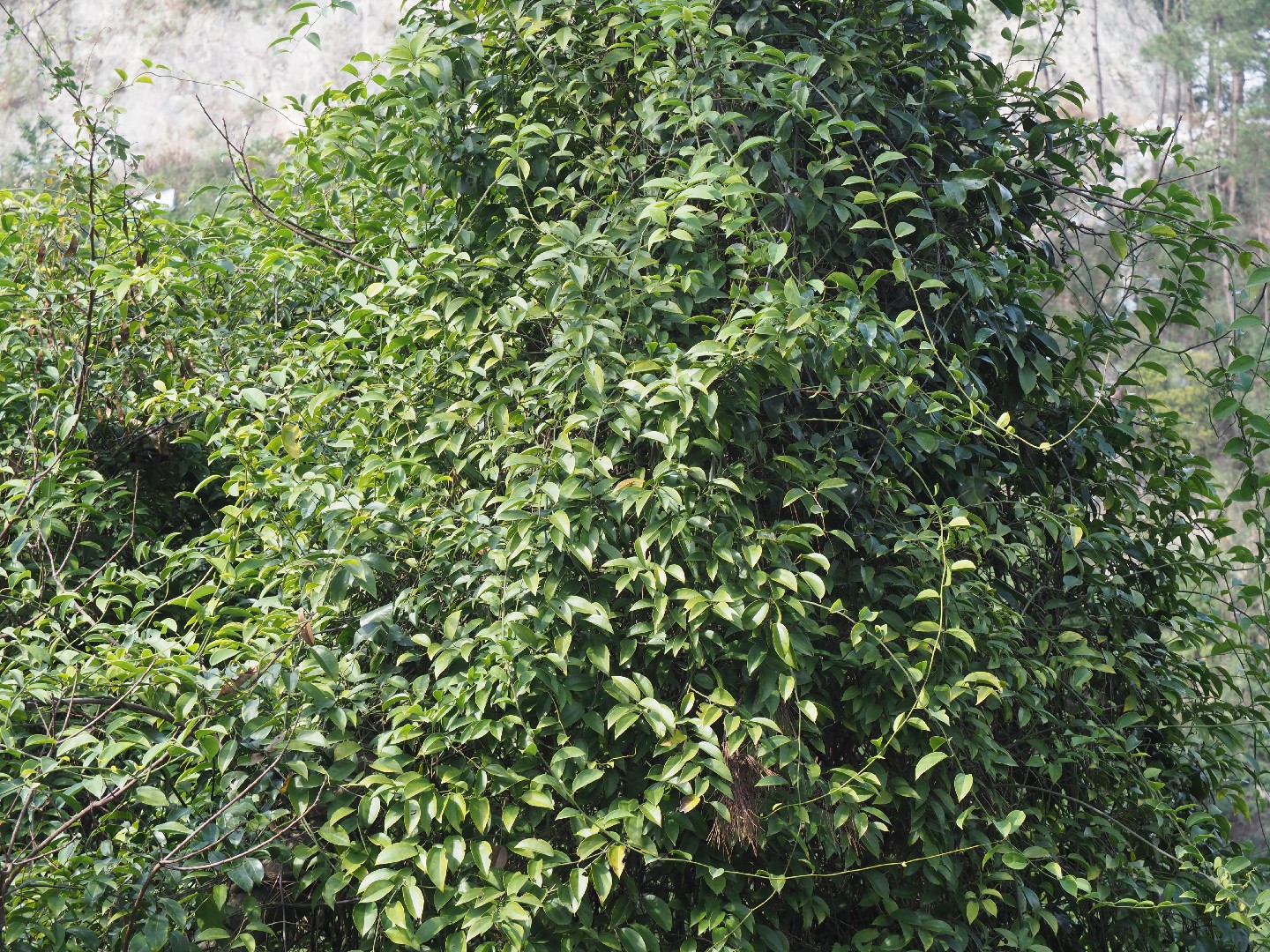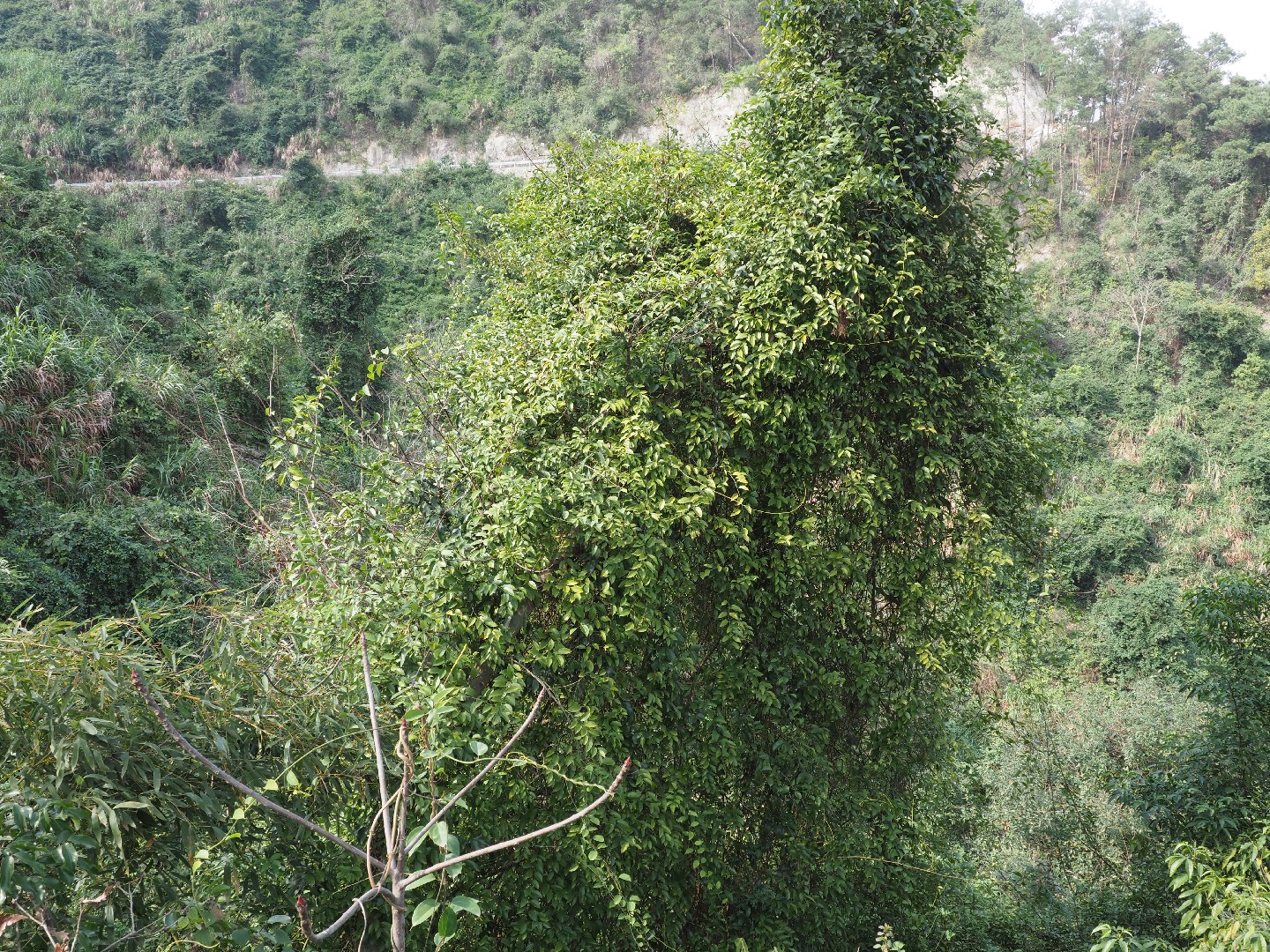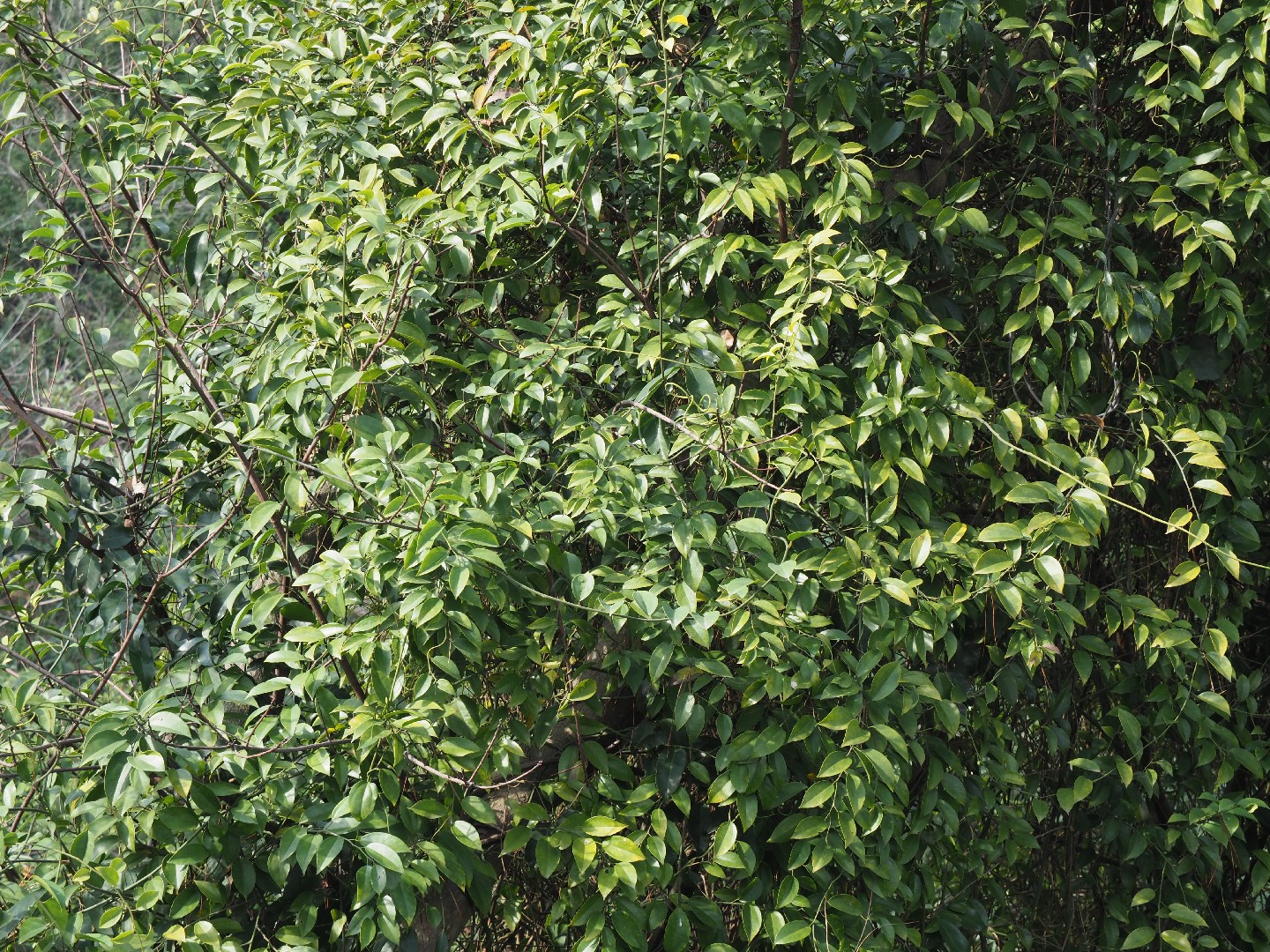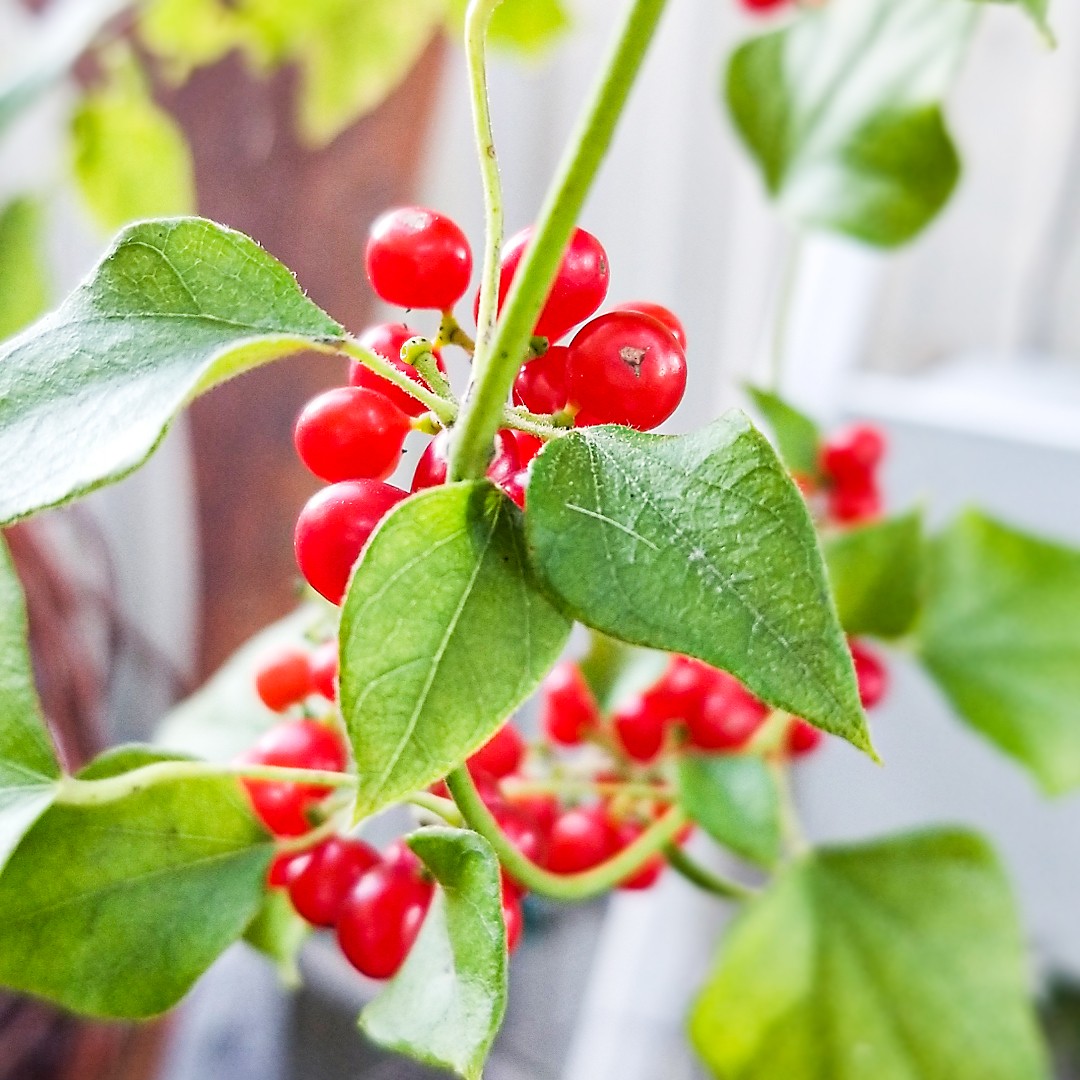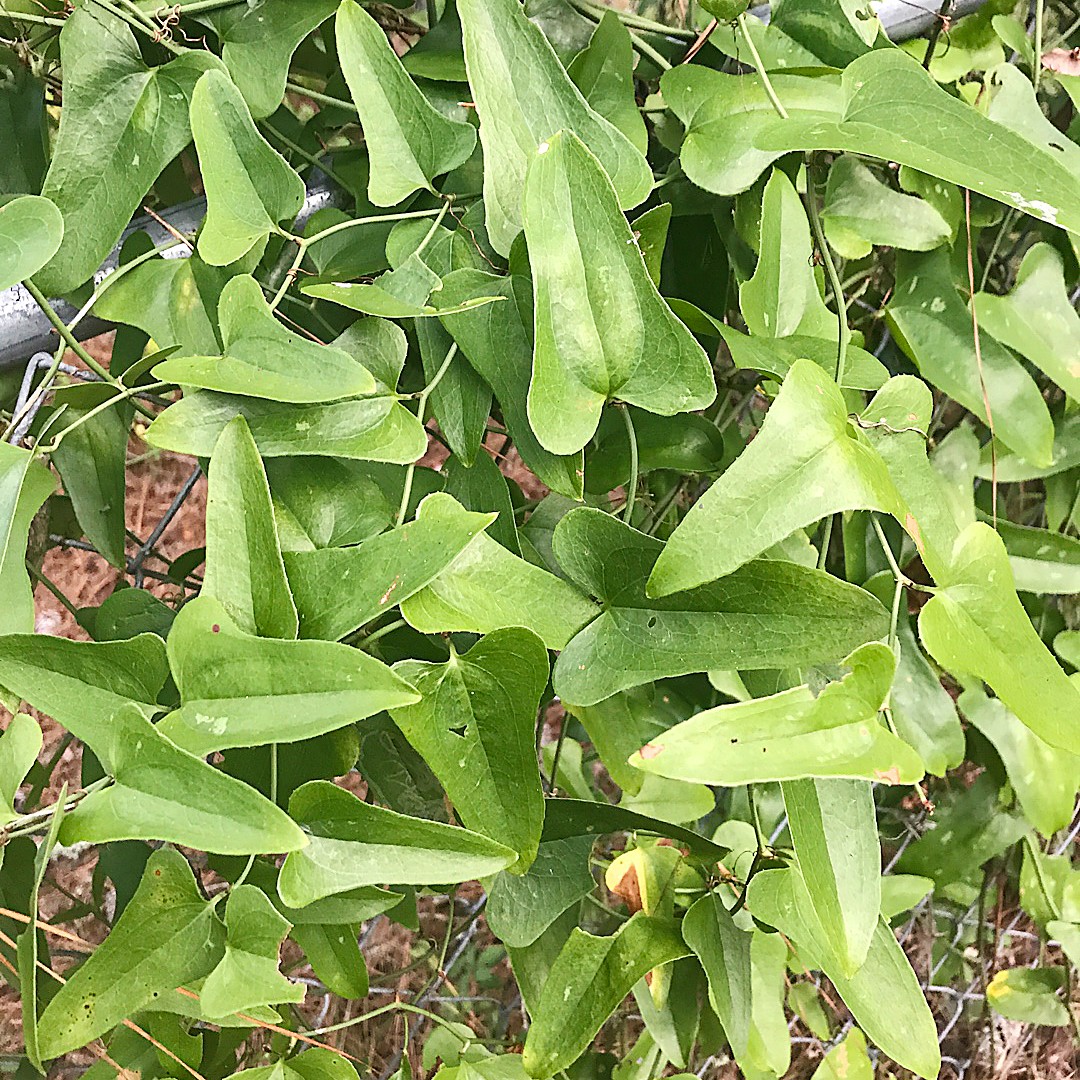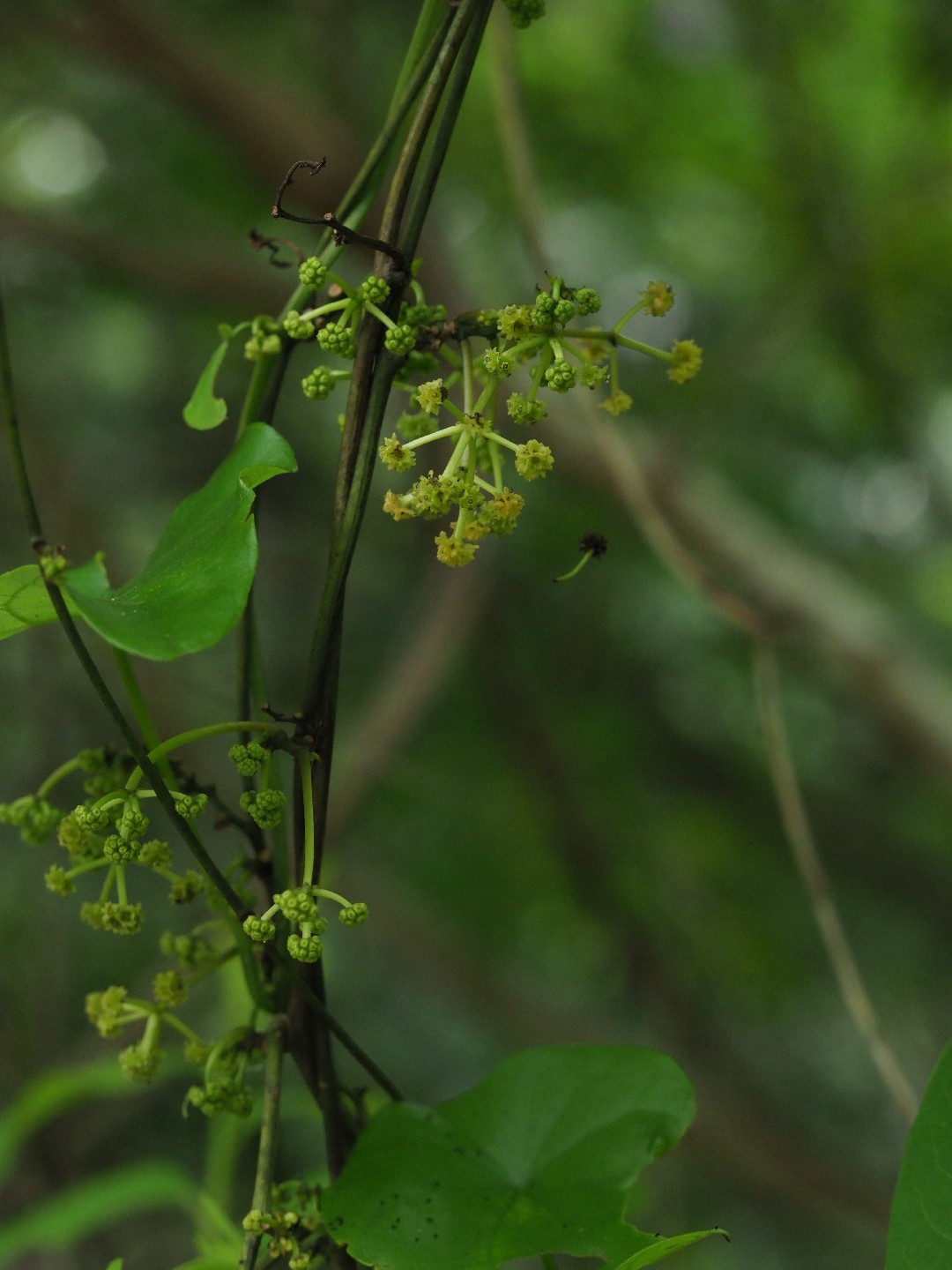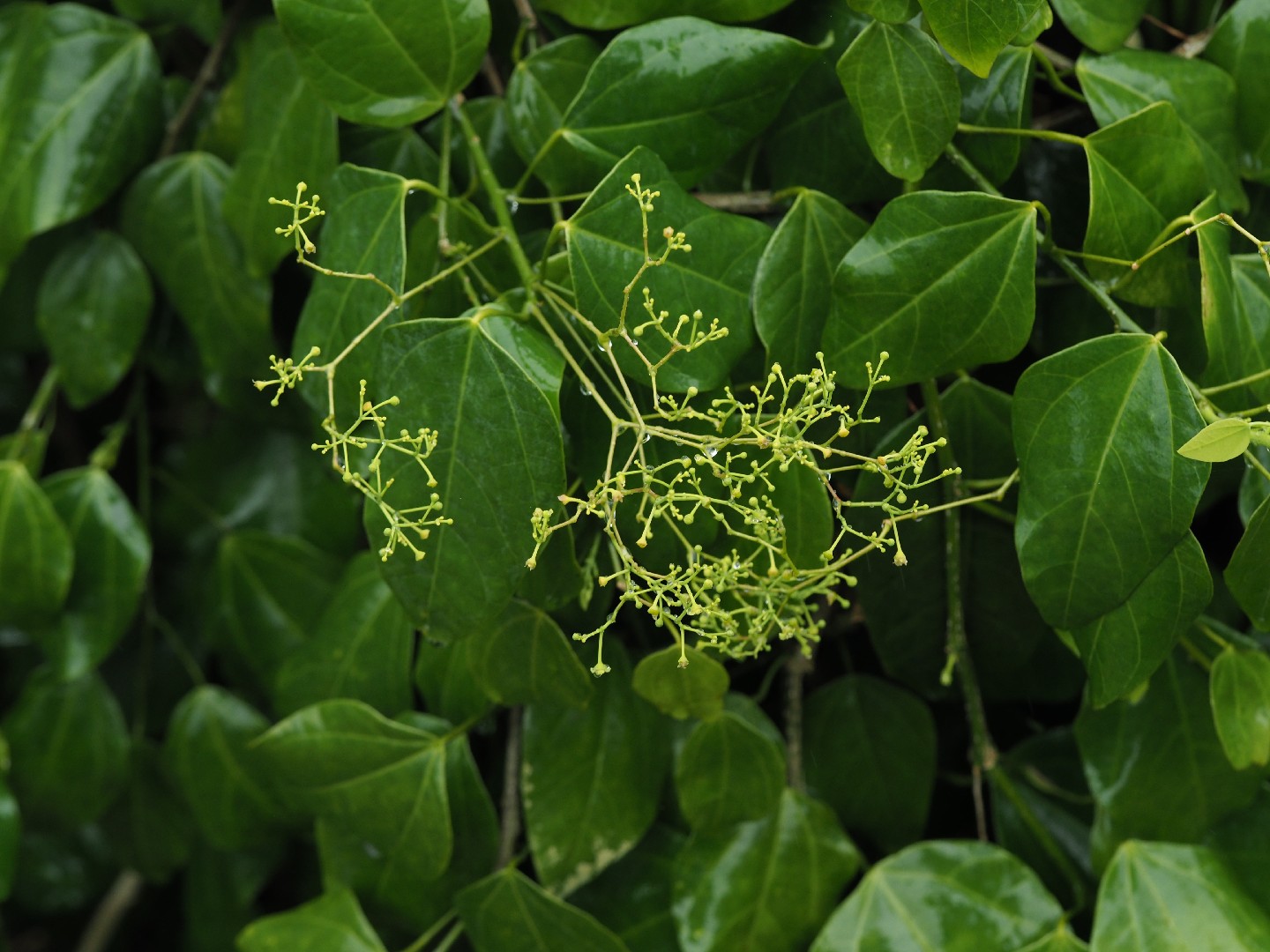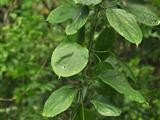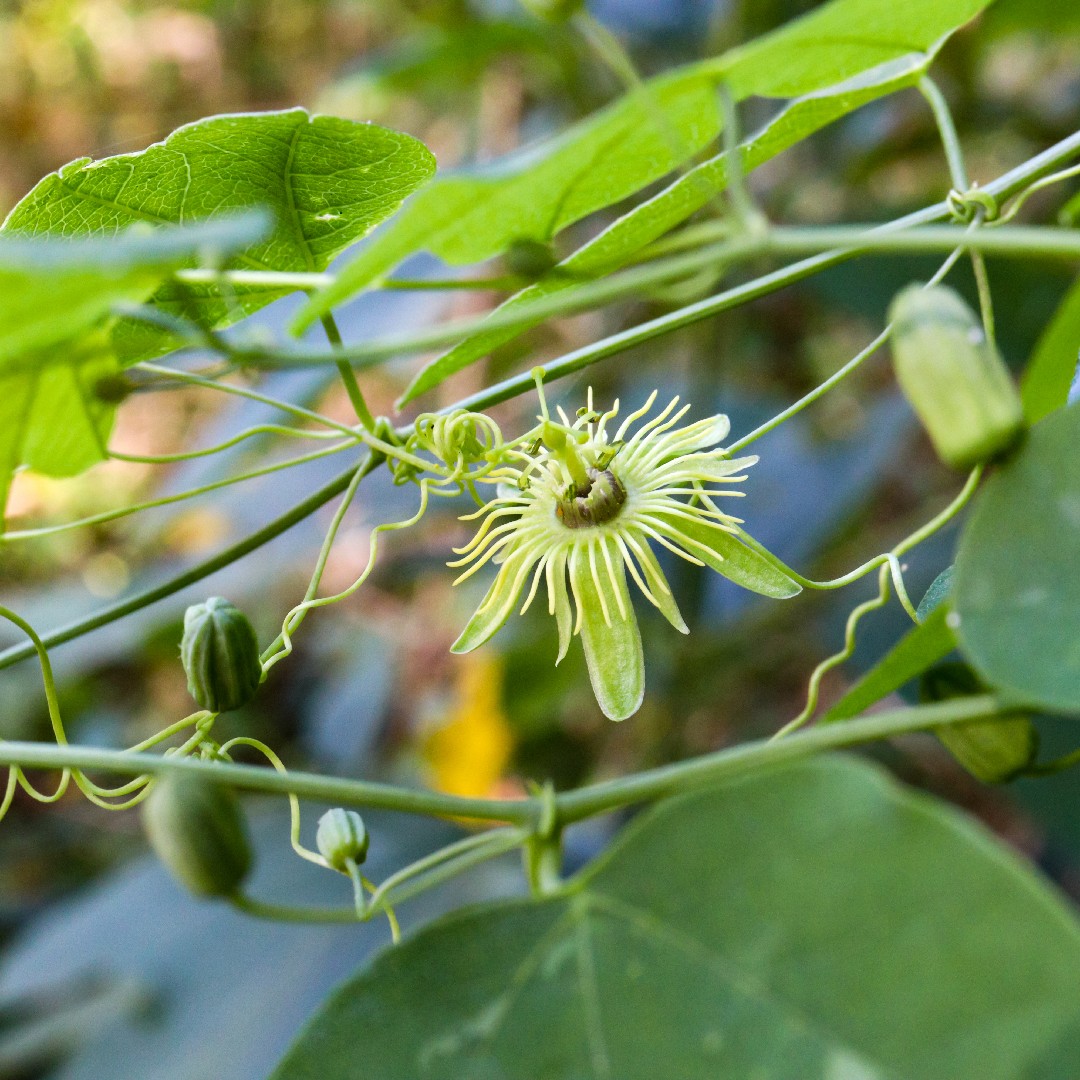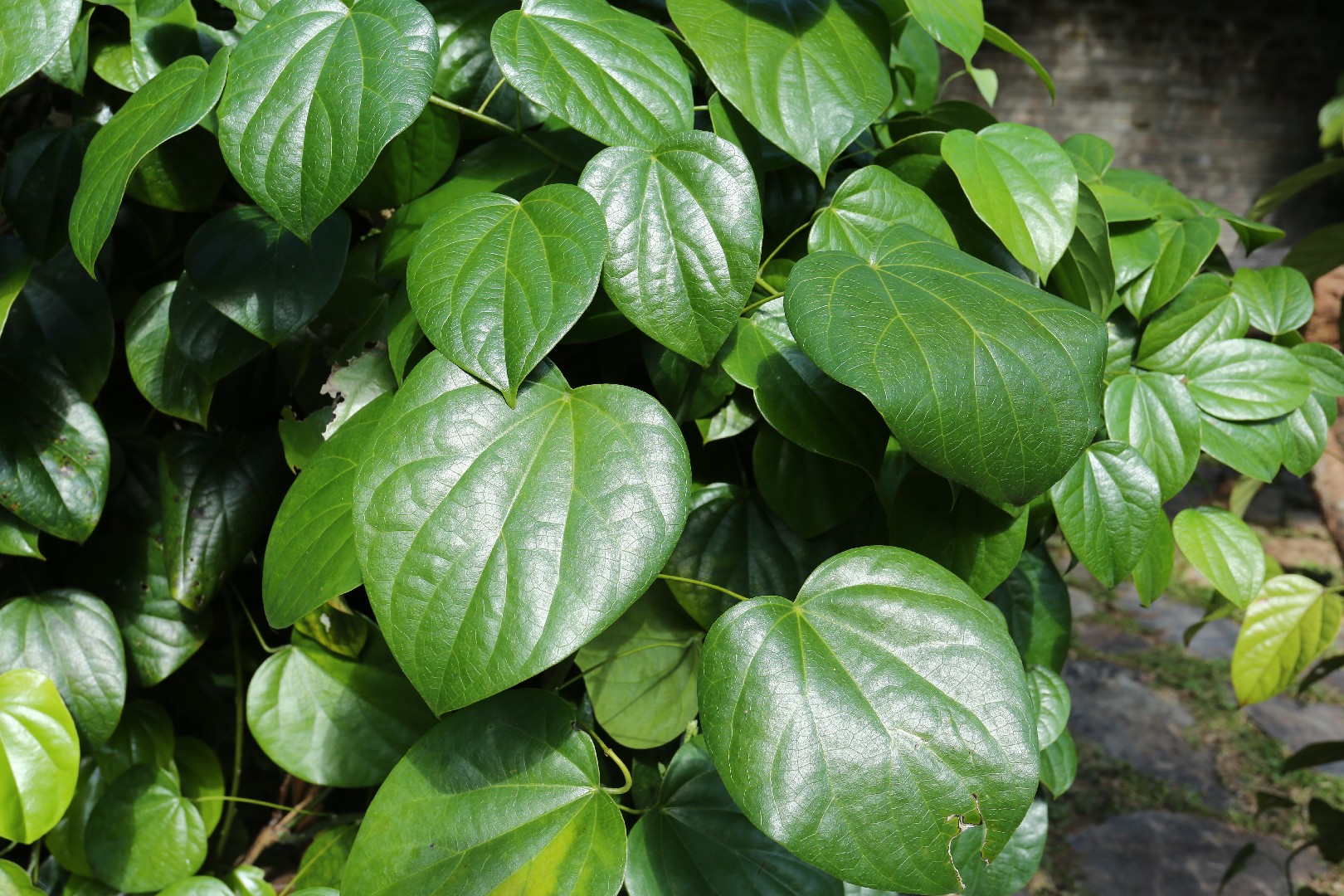What's the best method to water my Hypserpa nitida?
You might want to put a garden hose at the plant base to ensure that you're promoting excellent root development. Avoid directly spraying the leaves, and know that the leaves will require more watering if they are outdoors and facing direct sunlight. You can also use bubblers that you can put on to each plant to moisten the roots. Also, use soaker hoses that can cover the entire garden or bed when adding or removing plants to push the roots deeply. Drain any excess water and wait for the soil to dry before watering. Water at ground level to prevent diseases. On a sunny day, you might want to spray the entire bush with water. Whether potted or in-ground, please remember Hypserpa nitida prefers deep watering over light sprinkling.
![more]()
What should I do if I water Hypserpa nitida too much/too little?
An overwatered Hypserpa nitida can start to have leaves that turn yellow, drop off and wilt. The plant can also look dull and unhealthy, with signs of mushy stems. When they are beginning to show these signs, it's best to adjust your schedule whenever possible. The wilting can also be a sign of under watering as well. You might see that the leaves begin to turn crispy and dry while the overwatered ones will have soft wilted leaves. Check the soil when it is dry and watering is not enough, give it a full watering in time. Enough water will make the Hypserpa nitida recover again, but the plant will still appear dry and yellow leaves after a few days due to the damaged root system. Once it return to normal, the leave yellowing will stop . Always check the moisture levels at the pot when you have the Hypserpa nitida indoors. Avoid overwatering indoors and see if there are signs of black spots. If these are present, let the soil dry in the pot by giving it a few days of rest from watering. Overwatering can lead to root rot being present in your plant. If this is the case, you might want to transfer them into a different pot, especially if you see discolored and slimy roots. Always prevent root rot as much as possible, and don't let the soil become too soggy. You should dig a little deeper when you plant your Hypserpa nitida outdoors. When you check with your fingers and notice that the soil is too dry, it could mean underwatering. Adequate watering is required to help the plant recover.
![more]()
How often should I water my Hypserpa nitida?
The Hypserpa nitida likes deep and infrequent watering. You would want to soak them in a gallon of water each time, especially when they are planted in pots. The water storage of flower pots is limited and the soil will dry out faster. Watering is required every 3 to 5 days when living in a cold region. Water it early in the morning when the soil is dry, outdoors or indoors. You can also determine if watering is needed by checking the soil inside. When the top 2-3 inches of soil is dry, it is time to give the plant a full watering. During hot days, you may need to check the moisture daily, as the heat can quickly dry out the soil in the pot. Irrigation of the soil is also required if you have a garden. When you live in a hot climate, you might want to water once a week. Only water when you notice that about 2 to 3 inches of soil become too dry outdoors or indoors. Consider the amount of rainwater on the plant and ensure not to add to it to prevent root rot.You may not need additional watering of the plants if there is a lot of rainfall.Hypserpa nitida generally grows during spring and fall. When they are outdoors, you need to add mulch about 3 to 4 inches deep to conserve more water. You need to water the plants more frequently in sandy soil because this type tends to drain faster. However, with the clay one, you need to water this less frequently where you could go for 2-3 days to dry the plant and not develop any root rot. You could mark the date on the calendar whenever you water and when you notice that the leaves are starting to droop. This can mean that you might be a day late.
![more]()
How much water do I need to give my Hypserpa nitida?
The Hypserpa nitida generally needs about a gallon of water each schedule,With the potted plants, you might want to water them deeply until you see that the water is dripping at the bottom of the pot. Then, wait for the soil to dry before watering them again. You can use a water calculator or a moisture meter to determine the amount you've given to your plant in a week. Provide plenty of water, especially in the flowering period, but let the moisture evaporate afterwards to prevent root rot. If Hypserpa nitida is planted outdoor with adequate rainfall, it may not need additional watering. When Hypserpa nitida is young or newly planted, make sure it gets 1-2 inches of rain per week. As Hypserpa nitida continues to grow, it can survive entirely on rainfall. Only when the weather is too hot, or when there is no rainfall at all for 2-3 weeks, then consider giving Hypserpa nitida a full watering during the cooler moment of the day to prevent the plant from suffering from high heat damage. Additional watering will be required during persistent dry spells.
![more]()
Should I adjust the watering frequency for my Hypserpa nitida according to different seasons or climates?
The Hypserpa nitida needs outdoors come from rain, with only persistent dry weather requiring watering. Throughout the spring and fall growing seasons, the soil needs to be kept moist but not soggy, and alternating dry and moist soil conditions will allow the Hypserpa nitida to grow well. Throughout the summer, hot weather can cause water to evaporate too quickly, and if there is a lack of rainfall, you will need to water more frequently and extra to keep it moist. Usually, the Hypserpa nitida will need less water during the winter. Since the Hypserpa nitida will drop their leaves and go dormant, you can put them into a well-draining but moisture-retentive soil mixture like the terracotta to help the water evaporate quicker. Once your Hypserpa nitida growing outdoors begins to leaf out and go dormant, you can skip watering altogether and in most cases Hypserpa nitida can rely on the fall and winter rains to survive the entire dormant period. After the spring, you can cultivate your Hypserpa nitida and encourage it to grow and bloom when the temperature becomes warmer.This plant is not generally a fan of ponding or drought when flowering. You must ensure that the drainage is good at all times, especially during the winter. When the plant is in a pot, the plant has limited root growth. Keep them well-watered, especially if they are planted in pots during summer. They don't like cold and wet roots, so provide adequate drainage, especially if they are still growing. It's always best to water your Hypserpa nitida’s diligently. Get the entire root system into a deep soak at least once or twice a week, depending on the weather. It's best to avoid shallow sprinkles that reach the leaves since they generally encourage the growth of fungi and don't reach deep into the roots. Don't allow the Hypserpa nitida’s to dry out completely in the fall or winter, even if they are already dormancy. Don't drown the plants because they generally don't like sitting in water for too long. They can die during winter if the soil does not drain well. Also, apply mulch whenever possible to reduce stress, conserve water, and encourage healthy blooms.
![more]()
What should I be careful with when I water my Hypserpa nitida in different seasons, climates, or during different growing periods?
If planting in the ground, Hypserpa nitida mostly relies on rain. However, if there is no rainfall for 2-3 weeks, you may need to give proper consideration to giving the plants a deep watering. If watering Hypserpa nitida in summer, you should try to do it in the morning. A large temperature difference between the water temperature and the root system can stress the roots. You need to avoid watering the bushes when it's too hot outside. Start mulching them during the spring when the ground is not too cold. The age of the plants matter. Lack of water is one of the most common reasons the newly planted ones fail to grow. After they are established, you need to ease off the watering schedule. Reduce watering them during the fall and winter, especially if they have a water-retaining material in the soil. The dry winds in winter can dry them out, and the newly planted ones can be at risk of drought during windy winter, summer, and fall. Windy seasons mean that there's more watering required. The ones planted in the pot tend to dry out faster, so they need more watering. Once you see that they bloom less, the leaves begin to dry up. Potted plants are relatively complex to water and fluctuate in frequency. Always be careful that the pot-planted plant don't sit in the water. Avoid putting them in containers with saucers, bowls, and trays. Too much watering in the fall can make the foliage look mottled or yellowish. It's always a good idea to prevent overwatering them regardless of the current climate or season that you might have. During the months when Hypserpa nitida begins to flower, you might want to increase the watering frequency but give it a rest once they are fully grown. Give them an adequate amount of water once every 3 to 5 days but don't give them regular schedules. Make sure the soil is dry by sticking your finger in the pot, or use a moisture meter if you're unsure if it's the right time. Too much root rot can cause them to die, so be careful not to overwater or underwater regardless of the climate or season you have in your area.
![more]()
Why is watering my Hypserpa nitida important?
Watering the Hypserpa nitida helps transport the needed nutrients from the soil to the rest of the plant. The moisture will keep this species healthy if you know how much water to give. The watering requirements will depend on the weather in your area and the plant's soil. The Hypserpa nitida thrives on moist soil, but they can't generally tolerate waterlogging. Ensure to provide enough mulch when planted on the ground and never fall into the trap of watering too little. They enjoy a full can of watering where the water should be moist at the base when they are planted in a pot to get the best blooms. If they are grown as foliage, you need to water them up to a depth of 10 to 20 inches so they will continue to grow. If it's raining, refrain from watering and let them get the nutrients they need from the rainwater.
![more]()
How many hours of sunlight does Hypserpa nitida need to grow?
Unlike plants that require full, indirect sunlight, tropical herbs that prefer full shade need very little direct sunlight to grow. These plants typically require only a few hours of indirect light each day to thrive. While you should still place your full shade tropical herb near a window, it's important to ensure that the plant is never exposed to too much sunlight. If you're growing your full shade tropical herb indoors, you can provide it with the necessary light by placing it near a north-facing window or by using a grow light. A fluorescent or LED grow light can help mimic the soft, dappled light that your plant would receive in its natural environment.
![more]()
What will happen if Hypserpa nitida doesn’t get enough sunlight?
If your full shade tropical herb isn't getting enough sunlight, it may become leggy and weak. The leaves may also start to yellow and drop off, and the plant may stop growing. If you notice any of these signs, try moving your plant to a brighter location or providing it with additional light. Be careful not to expose the plant to direct afternoon sunlight, as this can cause sunburn.
![more]()
What will happen if Hypserpa nitida gets too much sunlight?
Tropical herbs that prefer full shade can be extremely sensitive to direct sunlight. If your plant is exposed to too much light, the leaves may start to turn yellow or brown and may eventually drop off. Additionally, the plant may become stunted and stop growing. If you notice any signs of sunburn or overexposure to light, move your plant to a shadier location or provide it with additional shade. In conclusion, understanding the sunlight requirements of your tropical herbs is crucial to keeping them healthy and happy. Full shade tropical herbs require only a few hours of indirect light each day to thrive, and ensure that the plant is never exposed to too much sunlight. By providing your plant with the right amount of light and shade, you can help ensure that it grows strong and healthy.
![more]()

